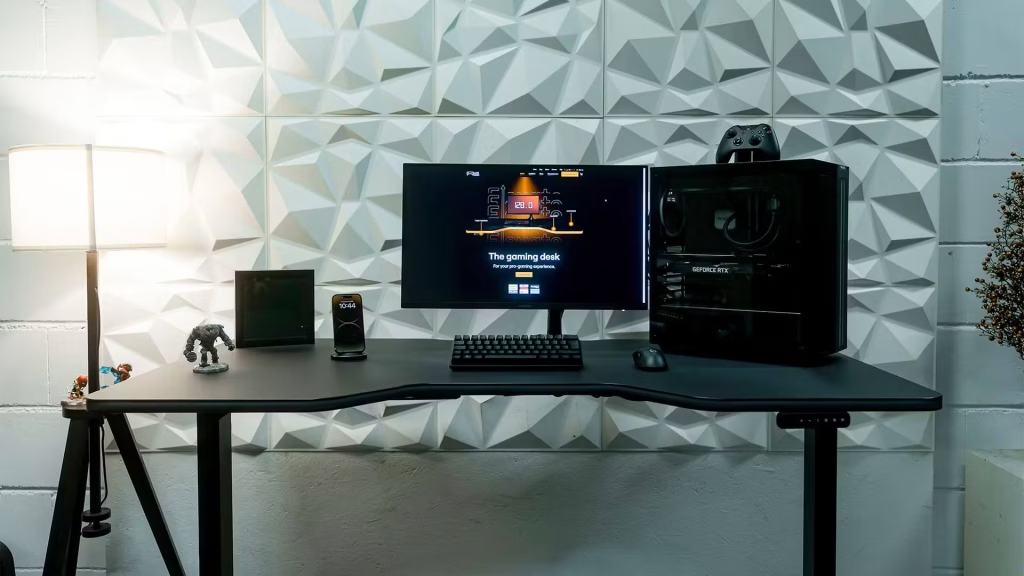The gaming table is often underestimated but forms the foundation of a great gaming setup. It’s not just about aesthetics—it’s about functionality, ergonomics, and creating a space that enhances your gaming performance.
Features to Look For in a Gaming Table
- Size and Space:
A good gaming table should have enough room for your monitor(s), keyboard, mouse, and other peripherals. If you use multiple monitors or a gaming PC, ensure the table has sufficient depth and width. - Durability and Materials:
Choose tables made from robust materials like steel frames and MDF or tempered glass tops. They should withstand the weight of your setup and last for years. - Cable Management:
Gaming setups often involve numerous cables. Built-in cable management systems keep everything neat and prevent accidental disconnections during intense sessions. - Adjustability:
Height-adjustable tables are becoming popular, allowing users to switch between sitting and standing. This feature promotes better posture and reduces fatigue during long gaming sessions. - Additional Features:
Tables with added functionalities like headphone hooks, cup holders, or built-in charging stations can improve convenience and organization.
Styles of Gaming Tables
- Minimalist: Clean lines and simple designs, perfect for a clutter-free setup.
- RGB Tables: Integrated lighting systems that sync with your gaming accessories for a high-tech look.
- Corner Desks: Ideal for saving space and creating an efficient workstation.
Tips for Setting Up Your Gaming Table
- Position the monitor at eye level to reduce neck strain.
- Ensure your gaming chair complements the table height for proper ergonomics.
- Use monitor arms or risers for better space utilization.
Conclusion
A high-quality gaming table is more than just furniture; it’s the stage for your entire gaming experience. Whether you prioritize durability, adjustability, or aesthetics, the right table will keep your setup organized, functional, and stylish.

